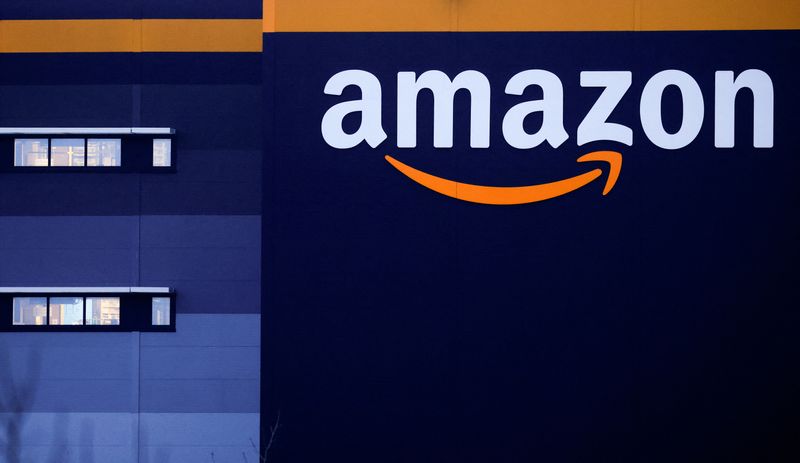By Jeffrey Dastin
NEW YORK (Reuters) -Amazon.com Inc will raise fees for its delivery and streaming service Prime in Europe by up to 43% a year, the online retailer said on Monday, as it moves to counter higher costs days before it reports quarterly financial results.
The price hike, following one that Amazon (NASDAQ:AMZN) announced for Prime in the United States in February, reflects mounting pressure from Wall Street on new Chief Executive Andy Jassy to shore up profit as inflation rises and a downturn looms.
Shoppers in Germany, Amazon's second-biggest market after the United States, will see fees for an annual Prime membership rise 30% to 89.90 euros ($91.88). The retailer's No. 3 market, the United Kingdom, will have a 20% increase to 95 pounds ($114.47) per year, while Amazon sites covering Spain, Italy and France will charge Prime members between 39% and 43% more yearly.
The changes take effect starting Sept. 15 when members join or next renew.
Amazon cited "increased inflation and operating costs" as well as faster delivery and more content to stream in statements on the price rises, the first since 2018 for some of the countries. "We will keep working to ensure Prime offers exceptional value for members," it said.
In April, Amazon posted its first quarterly loss in seven years from headwinds including higher wages, rising gas costs and an unrealized loss from its stake in Rivian Automotive Inc.
In the just-ended June quarter, the value of that investment declined another $4 billion. Ford Motor (NYSE:F) Co, also a Rivian investor, recently sold some of its shares.
Amazon said it remains committed to working with Rivian, "an important partner" helping it put thousands of electric delivery vans on the road in the United States in 2022.
Analysts on average expect net income of $1.38 billion when Amazon reports results on Thursday, according to IBES data from Refinitiv. This week, Walmart (NYSE:WMT) Inc warned its 2022 profit would fall more than anticipated as higher fuel and food prices led consumers to ease discretionary spending.
Amazon, after record operating profits from at-home shopping in the pandemic, is now on a cost-cutting program. It has not backfilled roles in some warehouses, paused building a major office space in Bellevue, Washington and slowed warehouse openings while letting leases lapse.
It has increased prices for some merchants selling on its platform, too. In May, Amazon imposed an average 4.3% fuel and inflation surcharge on sellers storing and shipping their products in major European markets, following a similar move in the United States.
Analysts are concerned a downturn could slow a major profit engine for the company, its cloud division Amazon Web Services (AWS).
"AWS revenue is more exposed than (cloud rival Microsoft Corp (NASDAQ:MSFT)'s) given a greater portion of the clients are in the startup space, which is under pressure," Bernstein Research said in a recent note.
How much the Prime hikes will offset costs was unclear. Months into the U.S. increase, the percentage of shoppers who were Prime members for a year had grown, Colin Sebastian of Baird Equity Research said after Amazon's Prime Day event.
While the July Marketing blitz was "not a blow out," he said, "there is less churn than feared from higher membership costs."

($1 = 0.9785 euro)
($1 = 0.8299 pound)